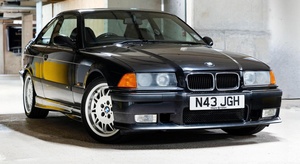Pattyo wrote:
French is there a "cheap" way to convert these engines to carburation? It sounds like the fuel injection is not terrible but I like the look of carbs.
Carbs vs Fuel rejection, The early V12's all had carbs. from 1971-1974 California carbs were 242 horsepower while European carbs were something like 271 horsepower. Then they switched to fuel rejection, it kicked it up to 292 horsepower so roughly carbs cost about 50 horsepower over fuel rejection.. (OK I know it's supposed to be injection ) But wait that's not all folks!!! the problem with carbs is the stupid dog leg in the manifold to get the carb to fit under the bonnet of an XK-E. When that is cut off there is a 50 horsepower gain.. (Done by the guy with the MGB GT V12 )
) But wait that's not all folks!!! the problem with carbs is the stupid dog leg in the manifold to get the carb to fit under the bonnet of an XK-E. When that is cut off there is a 50 horsepower gain.. (Done by the guy with the MGB GT V12 )
Here's the issue with fuel injection.. Most Jaguars don't have any real way to adjust them. Oh there is a slight adjustment built in for slightly richening or leaning out the mixture but nowhere near modern systems.. There isn't an IC network to be found.. Believe it or not, it's analog not digital!!
An outfit in England (AJ6 Engineering) can adjust things for you depending on what you do to the engine but it's very much a case of you shipping your "computer" to them, telling them what you need and they "adjusting" it to what they hope solves your requirements and shipping it back..
There are ways to trick the system. When I turbo'd a V12 I used a simple FMU (fuel modification unit) that took the boost pressure and as the signal increased it sent a lean mixture signal to the computer so it fattened up the mixture.. It was only $85 back then. Dealing with the timing I took a H.E. distributor and switched it for the Carb distributor basically trading advance for retard. It very much was a kludge system done just to give me a shot at Lemons racing until talking with some official's I found out that basically they wouldn't allow it.
The real power gains that cost next to nothing are to switch to E85 gas. On the V12 there is 100 horsepower waiting for you without having to open the engine up!!** But you need to really fatten up the mixture.. (by about 65%) If you use the earliest injectors in the latest engine you can't get there! So you are forced to resort to something like a Megasquirt computer and while it might exist for a V12 I'm sure no one has mapped the requirements of E85 in a V12 Jaguar..
My solution is to cut the end off the fuel injection manifold and with the aide of a piece of aluminum angle weld on a plate to take 3 (three) Stromberg carbs per side.. (six total) There are a lot of 1&3/4 inch Stromberg carbs around basically the go-to carb of the early pollution control solution.. Jaguar, (6&12) Volvo, Triumph, MGC, etc. etc..
Six carbs instead of 4 gives you 50% more flow and it's merely a needle and jet away from the required enrichment.. Burlen (sp?) carbs is still in business..
Now here's where things get really good! The early flathead engines had only a 7.8-1 compression ratio. while the later engines called the H.E. had not only the needed fuel injection manifold but also 11.5-1 compression ratio.. perfect to take advantage of one of the real benefits of all that alcohol!!!
The flaw will be the distributor! Grab a distributor off the early one and the advance curve in it will work a lot better than the retard curve in the H.E. If you can find one from a European car for the best curve.. (pretty much hens teeth since most early V12's came here to American)
** while fuel mileage in a H.E. will go down to about 7-9 (compared to maybe 14-17) the lower cost of E85 will get you a similar cost per mile..
































